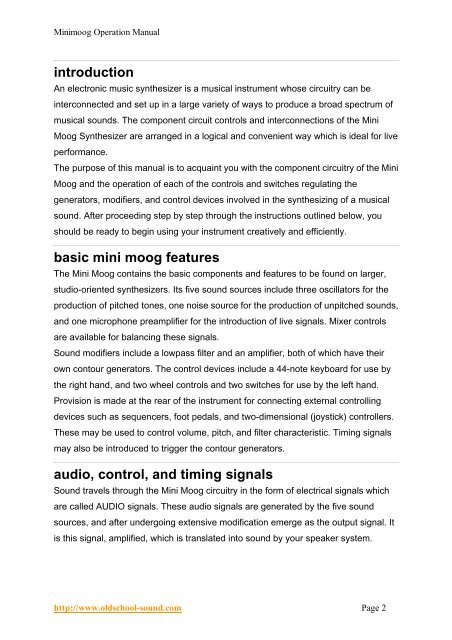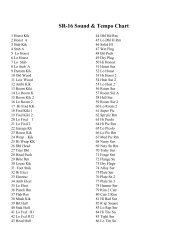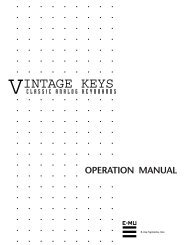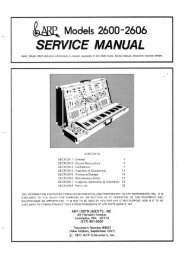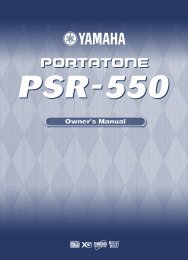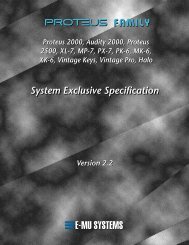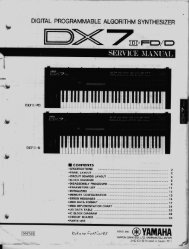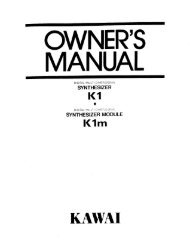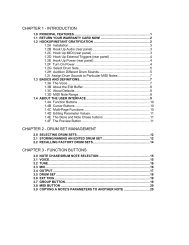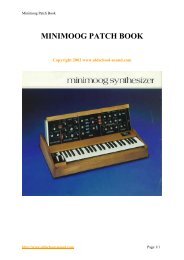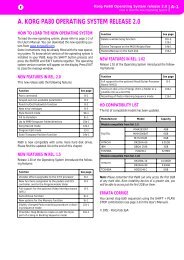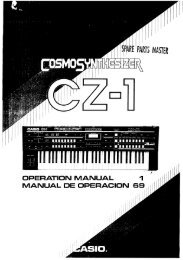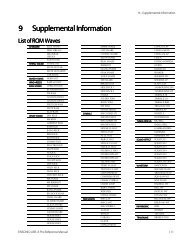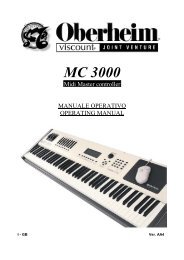minimoog owners manual.pdf - Synth Zone
minimoog owners manual.pdf - Synth Zone
minimoog owners manual.pdf - Synth Zone
Create successful ePaper yourself
Turn your PDF publications into a flip-book with our unique Google optimized e-Paper software.
Minimoog Operation Manual<br />
introduction<br />
An electronic music synthesizer is a musical instrument whose circuitry can be<br />
interconnected and set up in a large variety of ways to produce a broad spectrum of<br />
musical sounds. The component circuit controls and interconnections of the Mini<br />
Moog <strong>Synth</strong>esizer are arranged in a logical and convenient way which is ideal for live<br />
performance.<br />
The purpose of this <strong>manual</strong> is to acquaint you with the component circuitry of the Mini<br />
Moog and the operation of each of the controls and switches regulating the<br />
generators, modifiers, and control devices involved in the synthesizing of a musical<br />
sound. After proceeding step by step through the instructions outlined below, you<br />
should be ready to begin using your instrument creatively and efficiently.<br />
basic mini moog features<br />
The Mini Moog contains the basic components and features to be found on larger,<br />
studio-oriented synthesizers. Its five sound sources include three oscillators for the<br />
production of pitched tones, one noise source for the production of unpitched sounds,<br />
and one microphone preamplifier for the introduction of live signals. Mixer controls<br />
are available for balancing these signals.<br />
Sound modifiers include a lowpass filter and an amplifier, both of which have their<br />
own contour generators. The control devices include a 44-note keyboard for use by<br />
the right hand, and two wheel controls and two switches for use by the left hand.<br />
Provision is made at the rear of the instrument for connecting external controlling<br />
devices such as sequencers, foot pedals, and two-dimensional (joystick) controllers.<br />
These may be used to control volume, pitch, and filter characteristic. Timing signals<br />
may also be introduced to trigger the contour generators.<br />
audio, control, and timing signals<br />
Sound travels through the Mini Moog circuitry in the form of electrical signals which<br />
are called AUDIO signals. These audio signals are generated by the five sound<br />
sources, and after undergoing extensive modification emerge as the output signal. It<br />
is this signal, amplified, which is translated into sound by your speaker system.<br />
http://www.oldschool-sound.com Page 2


